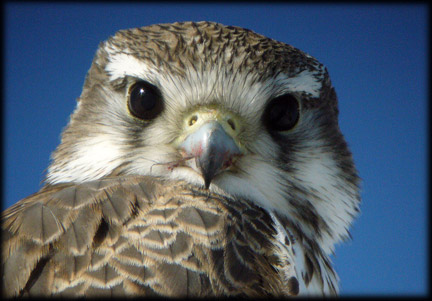Then there's the nemesis bird (or birds.) Nemesis birds are species we need for one of our important lists, but manage to repeatedly dip on (read: "miss") despite reasonable efforts and likelihoods of seeing said bird. To reach nemesis status, a particular bird will disappoint multiple times, often missed by bare minutes or less after plenty of other birders have succeeded on the same chase. I've said it before, but it bears repeating that the worst words a birder can hear are, "you should have been here ____ (minutes, days, or whatever) ago."
Anyway, I only have 5 lists that I really pay attention to for now- my Life, ABA-area (almost the same as my Life List) Photo, Colorado, and Boulder County Lists. I fool around with a yard list, too, but since my yard isn't great for bird diversity I don't get too worked up over it. Anyway, the easiest bird left on my Colorado list was one that gave me a heck of a time until last weekend when I finally shook hands with it in Cañon City, Colorado.
I was down for a Colorado Field Ornithologists meeting, which was held at the venue of our upcoming convention 16-18 May. Before the meeting, Mark Peterson (CFO board member and convention field trip coordinator) squired a few of us around to seek out some good birds that were in the area. One was my state nemesis bird, a Carolina Wren.
 When I'm out of the state, I have no trouble seeing and hearing these birds. But in Colorado, they have tormented me with near miss after near miss. For example, a few years ago I missed a singing bird in the northeast part of the state by about 5 minutes, but by the time I showed up it had shut up, not to be seen or heard again for the half-hour or so I tried for it. I missed another in Boulder County on a mid-winter trip I was leading with Ted Floyd- he had it at the front of the group but by the time I caught up it had gone to ground. Double-ouch!! (Missed it for the state and the only county I list in!!) My best bet became Cañon City, which isn't too far and has hosted a territorial male (and perhaps a breeding pair) for a few years now. The first time I went there I had detailed fresh info on the bird's location, got to just the right stretch of the Arkansas River, but had no success. Perhaps the constant gale-force winds had something to do with it. Then, on a new-year's trip to the same spot this past January, I met some of my pals who had just had the bird. Did I get it, within the hour of them? Of course not- that's how nemesis birds work! Anyway, the third time there was a charm, and as we were getting close to the territory we heard it break into song. Shazzam! Walking up, we had nice looks, too, although in Carolina Wren form it kept in branchy cover. So now that Mr. Carolina finally has lost his nemesis status, it is time to work on another one. I don't have a current contender, but a dip or two more on something like American Woodcock or Yellow-throated Vireo could elevate either to my current Colorado nemesis bird.
When I'm out of the state, I have no trouble seeing and hearing these birds. But in Colorado, they have tormented me with near miss after near miss. For example, a few years ago I missed a singing bird in the northeast part of the state by about 5 minutes, but by the time I showed up it had shut up, not to be seen or heard again for the half-hour or so I tried for it. I missed another in Boulder County on a mid-winter trip I was leading with Ted Floyd- he had it at the front of the group but by the time I caught up it had gone to ground. Double-ouch!! (Missed it for the state and the only county I list in!!) My best bet became Cañon City, which isn't too far and has hosted a territorial male (and perhaps a breeding pair) for a few years now. The first time I went there I had detailed fresh info on the bird's location, got to just the right stretch of the Arkansas River, but had no success. Perhaps the constant gale-force winds had something to do with it. Then, on a new-year's trip to the same spot this past January, I met some of my pals who had just had the bird. Did I get it, within the hour of them? Of course not- that's how nemesis birds work! Anyway, the third time there was a charm, and as we were getting close to the territory we heard it break into song. Shazzam! Walking up, we had nice looks, too, although in Carolina Wren form it kept in branchy cover. So now that Mr. Carolina finally has lost his nemesis status, it is time to work on another one. I don't have a current contender, but a dip or two more on something like American Woodcock or Yellow-throated Vireo could elevate either to my current Colorado nemesis bird.























